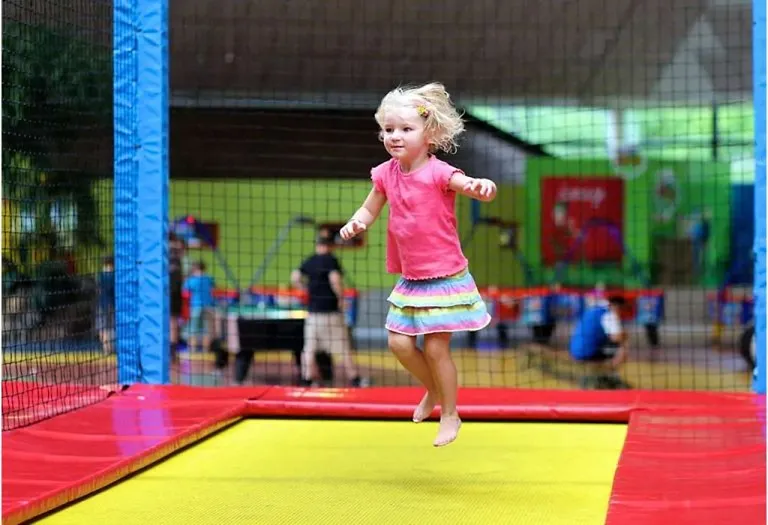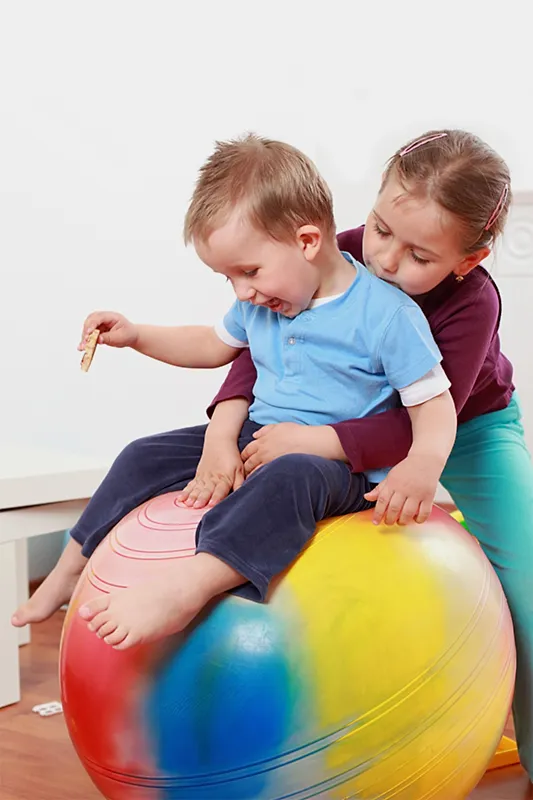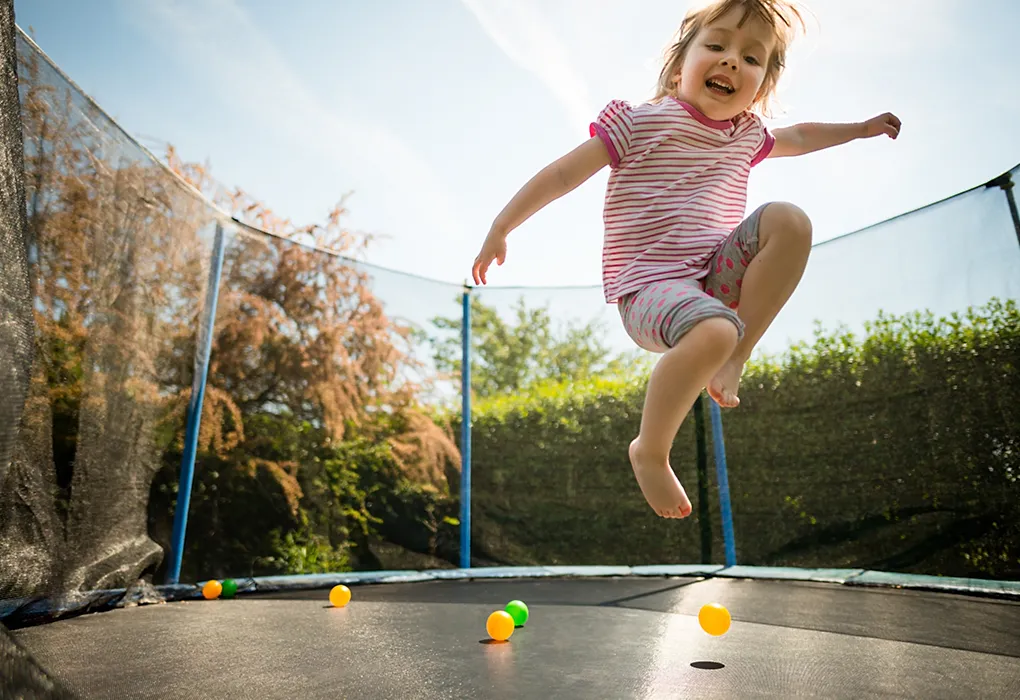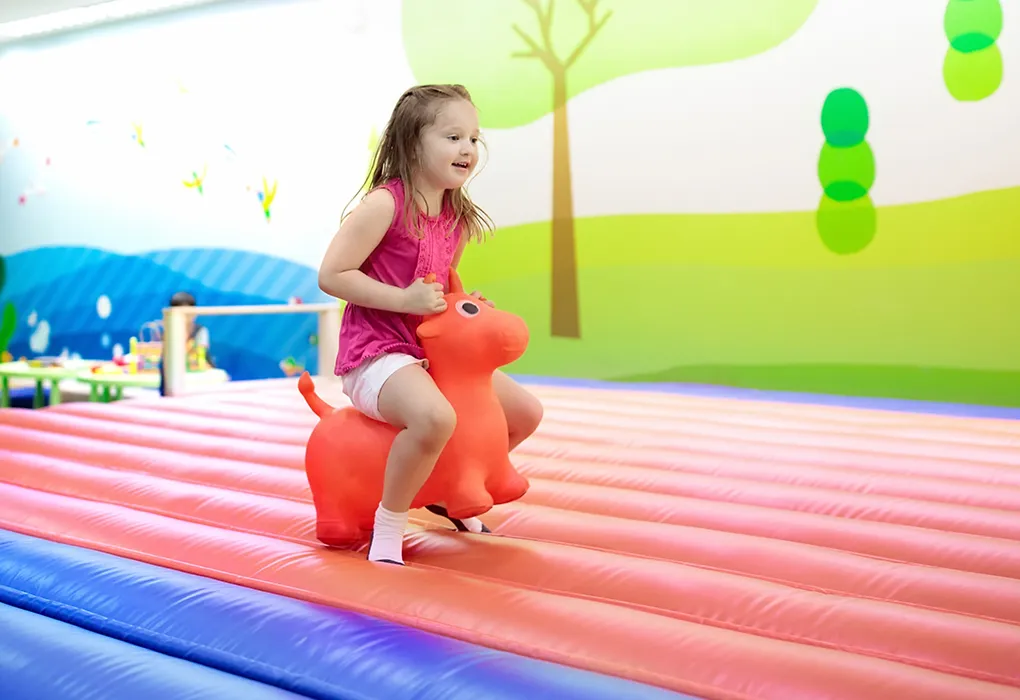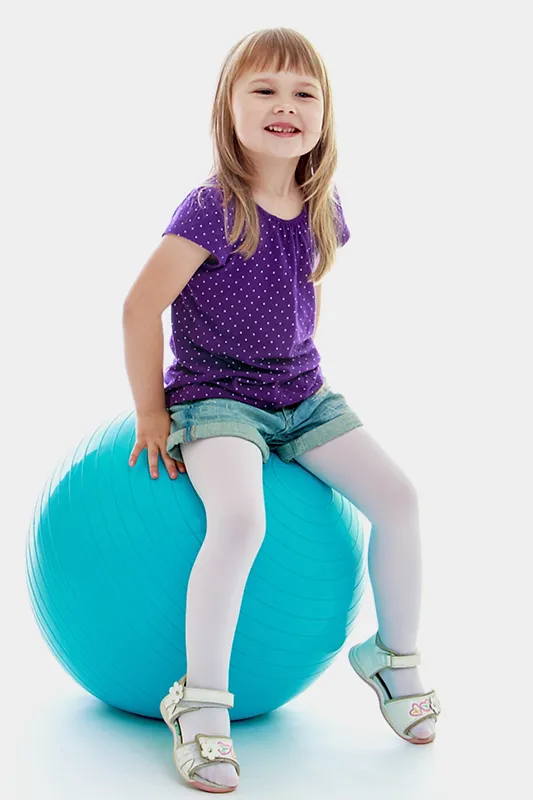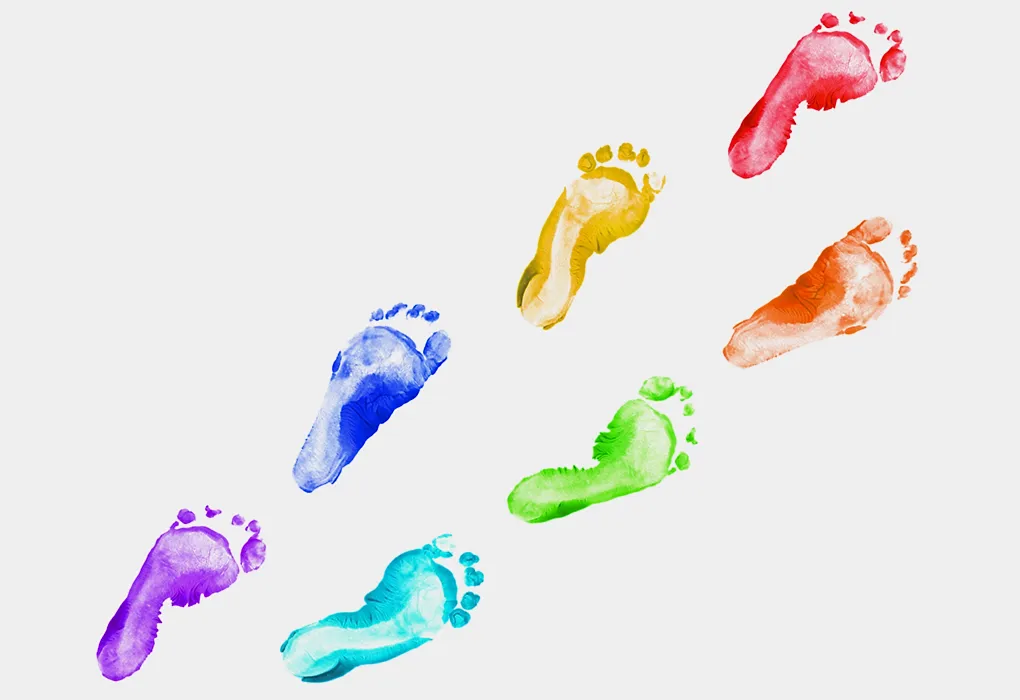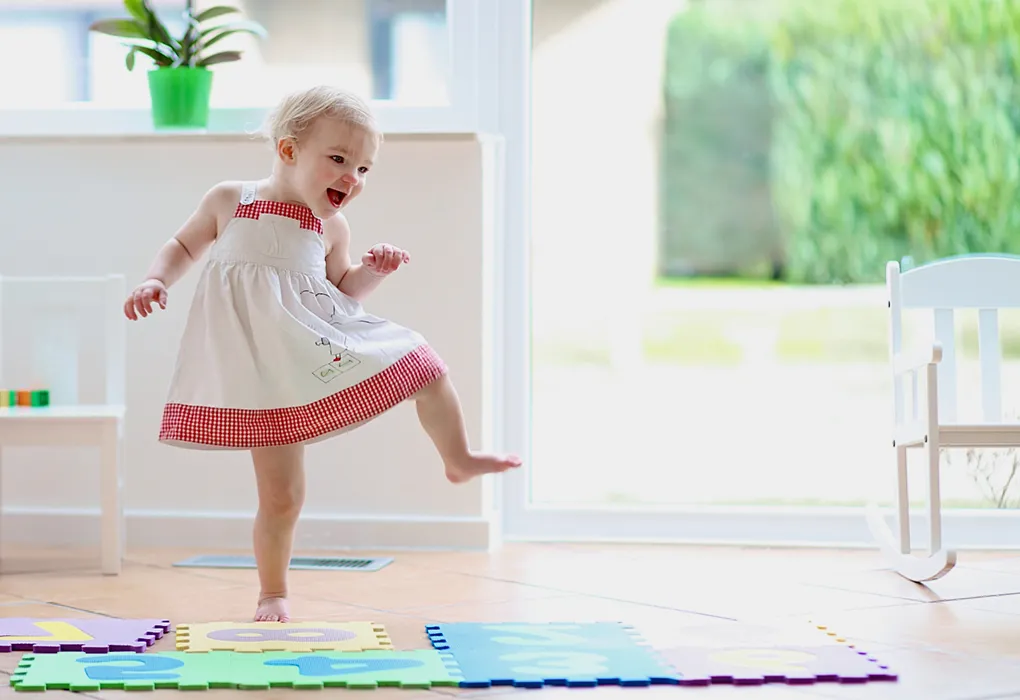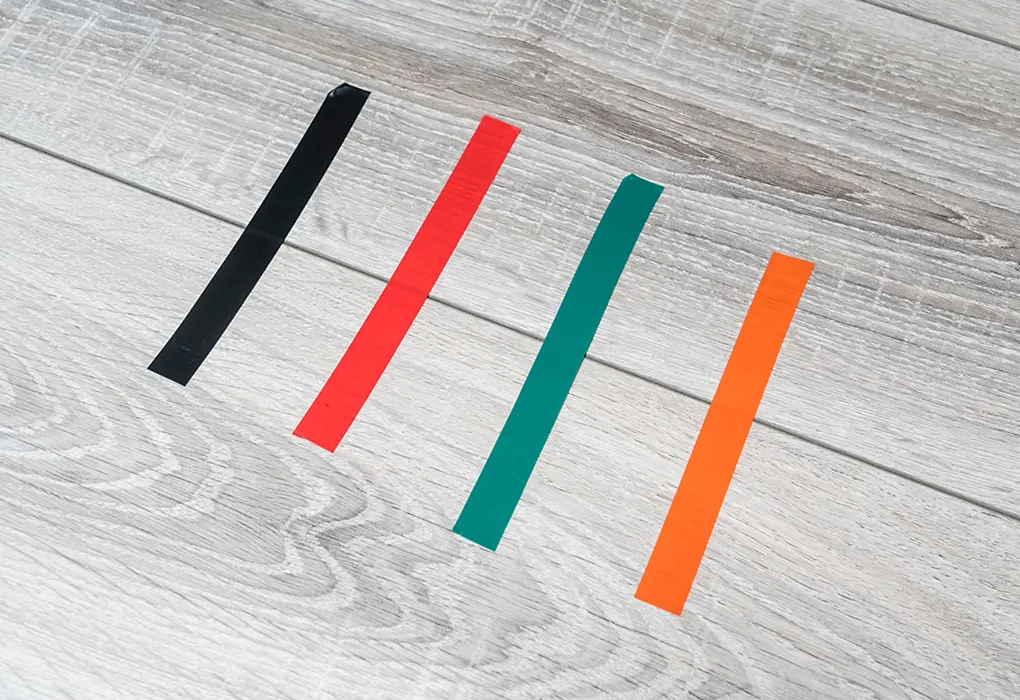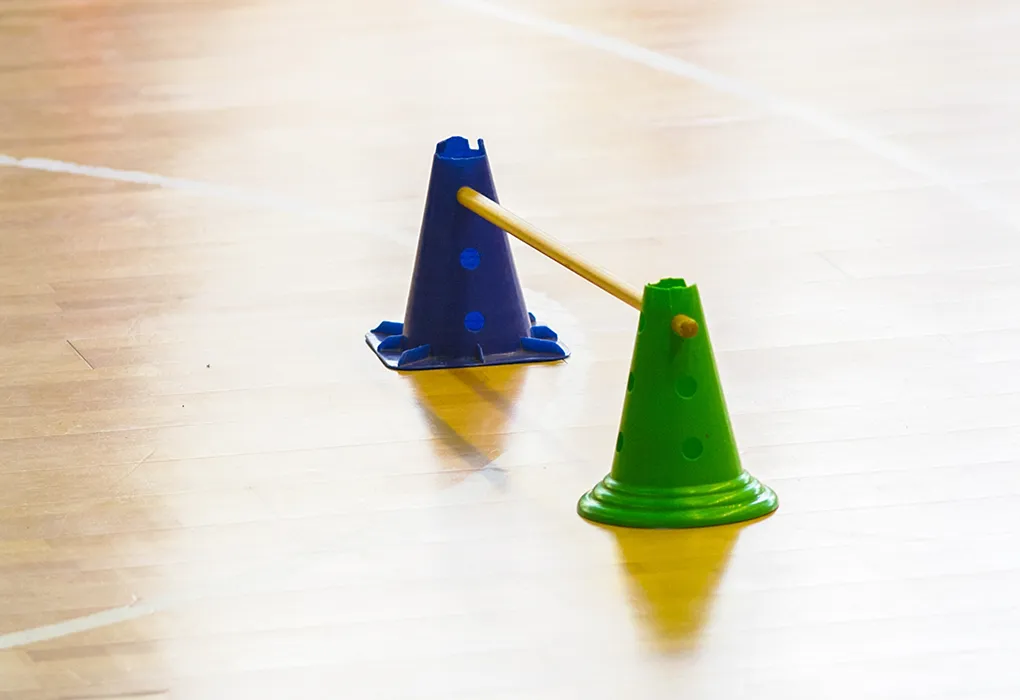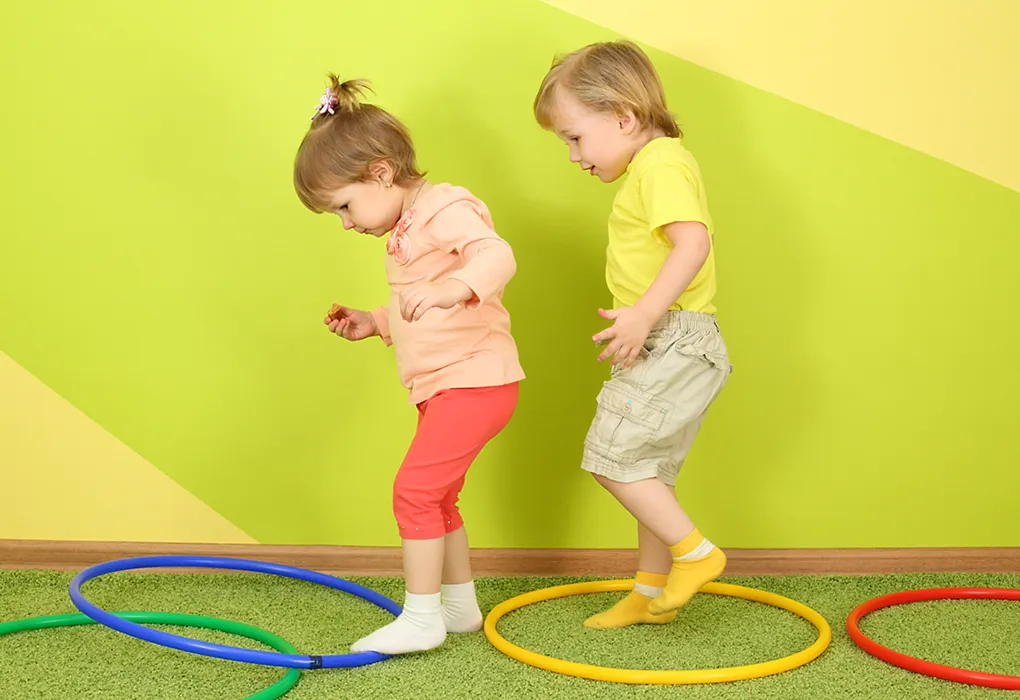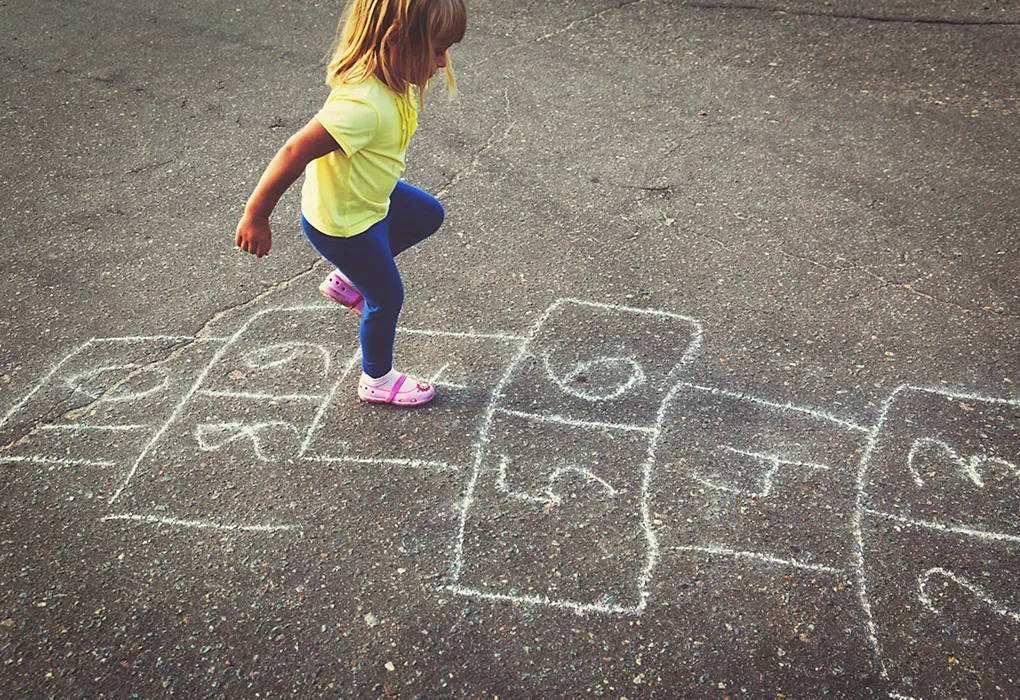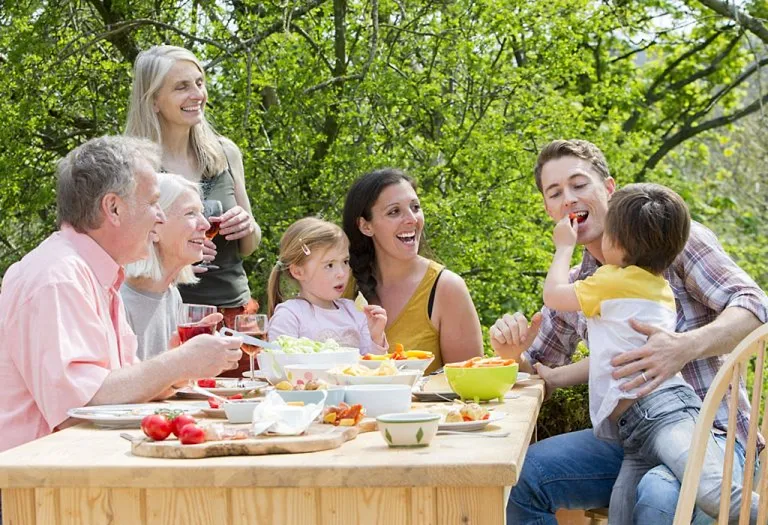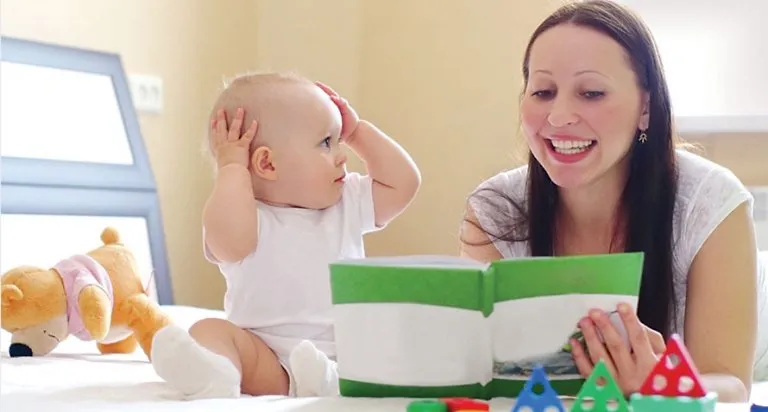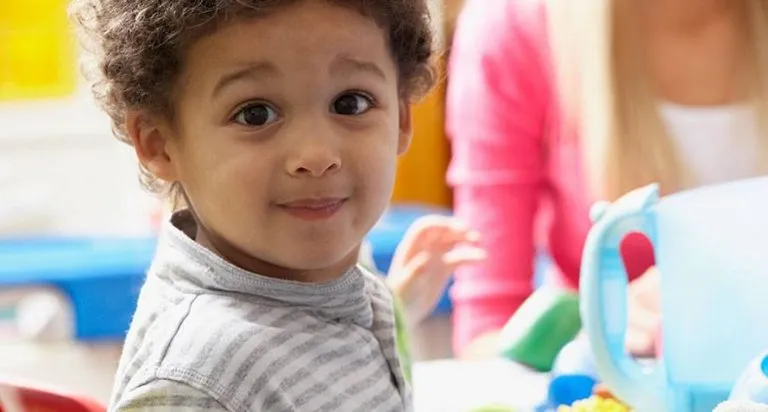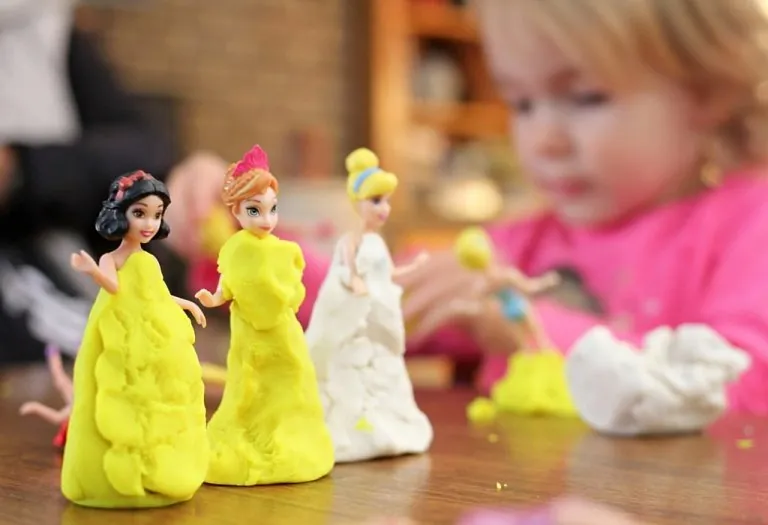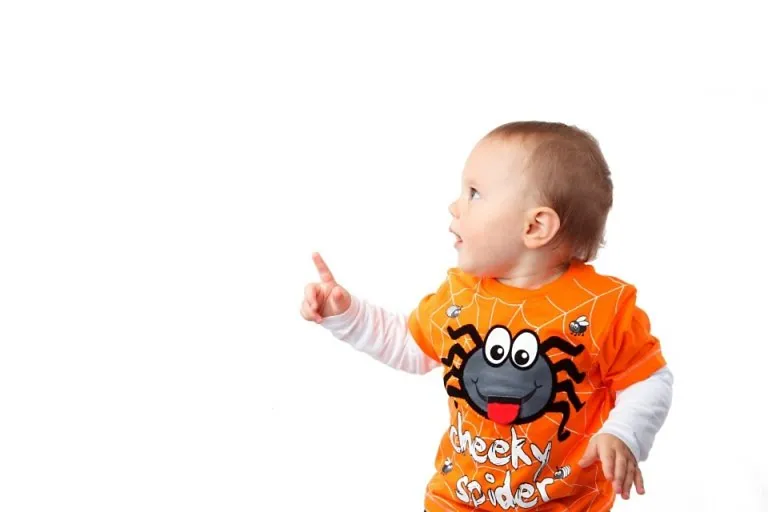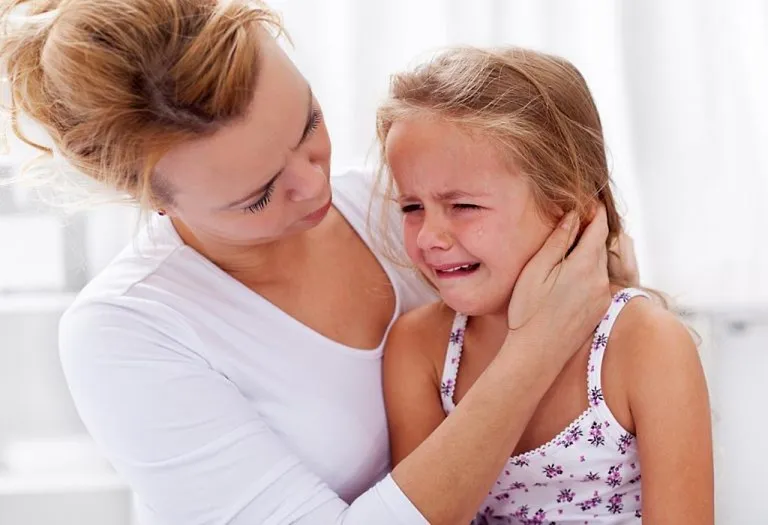Jumping : An Important Gross Motor Milestone
Jumping, that simple yet exhilarating act, holds profound significance in the developmental journey of children. While crawling, walking, and running often take centre stage, jumping adds a dynamic element to childhood movements, fostering strength, coordination, and joy in equal measure. From the tentative hops of a toddler to the exuberant leaps of an older child, the ability to jump represents more than just a physical action. 50% of toddlers and kids learn to jump with both their feet off the ground when they’re 24 months old, and nearly 75% of children learn this by 27 months.
Read on to learn how jumping shapes a child’s development, influencing their physical abilities, emotional resilience, and social interactions.
Importance of Jumping
Jumping plays a crucial role in the development of kids and toddlers, contributing to their physical, cognitive, and emotional growth. Here are several reasons why jumping is essential for young children:
- Physical Development: Jumping helps strengthen muscles, bones, and joints, promoting overall physical health and coordination (2).
- Balance and Coordination: It enhances balance and coordination as children learn to control their body movements while jumping.
- Cardiovascular Health: Jumping activities elevate heart rate, improving cardiovascular fitness and endurance (6).
- Bone Density: Weight-bearing activities like jumping can increase bone density, reducing the risk of osteoporosis later in life.
- Sensory Integration: Jumping provides sensory input, aiding in sensory integration and development.
- Emotional Regulation: Jumping releases endorphins, promoting happiness and reducing stress and anxiety.
- Social Interaction: Jumping games encourage social interaction and cooperation among children, fostering friendships and teamwork skills.
When Do Kids Learn to Jump?
Most children start learning to jump between the ages of 2 and 3 (1). Initially, they may experiment with small jumps, gradually gaining confidence and coordination as they grow. By age 4, many children can jump with both feet, leaving the ground simultaneously, demonstrating improved balance and control. However, individual development varies; some children may jump earlier or later than others.
Jumping – Developmental Milestone
This is a motor developmental milestone that requires balance and strength, body awareness, and motor planning. It is important to ensure that children are exposed to different environments while practising this skill. Doing this in bare feet will let the child interact with different and unique textures of the ground.
It is better to start the practice on soft surfaces like grass, padded mats, and carpets and then do it on hardwood. This way, each surface presents a unique challenge for the children. You can also use other children as examples, as peer play is required to accomplish this motor milestone. Children often tend to observe and learn from other children. So, when do toddlers start jumping?
21-24 Months
- At this age, kids jump off with both their feet up in the air.
- They can jump forward for at least 3 inches.
24-30 Months
During these months, the kids can jump from the bottom step, landing with both feet.
30-36 Months
They can now jump over small stationary items and obstacles.
3 Years
They can jump forward for a minimum length of 24 inches, taking off and landing with their two feet (4).
4 Years
When they age four, they start hopping on one foot at least 3 to 5 times.
5 Years
- They start jumping and turning 180 degrees in the air.
- They begin to jump rope (5).
- They start to hop eight times on one foot and can switch to the other foot and hop eight times.
It is essential not to hurry each child’s skill because this process occurs stepwise. The children start this process by first experimenting with the weight shift, jumping up and down, jumping over, hopping on one foot, and finally hopping alternatively on a single leg and double legs, hopscotch. All of these milestones happen in a sequence, and it is important to support and encourage them as they grow up and experiment.
Activities to Encourage Jumping
Developing these basic skills is a necessity and a joyful journey for your child. It’s a path that leads to a healthier, more active life as they grow older. When these skills are not acquired, their participation in activities becomes more challenging, potentially leading to social isolation as other children might start avoiding them.
Activities like jumping often begin spontaneously, but it is better to practice so that they master these skills. How to teach a toddler to jump? The most important thing you can do to encourage jumping is to give the children time, space, and opportunities to move around.
The following things can be done to encourage jumping:
1. Therapy Ball Jumps
You can start using the therapy balls by stabilising them with your body against a wall or in the corner of the room. You can support the kid with downward pressure at their hips while you encourage them to bounce up and down gently, strengthening their lower extremity joints.
2. Trampoline Jumps
Jumping on a trampoline with a bar is an excellent way for the children to develop their jumping skills independently. They can recruit upper body support with this trampoline until they are ready to depend on the strength of their lower back to jump vertically.
3. Animal Jumps
You can infuse jumping with more creative expression and make it more fun by role-playing many animal movements. You can try out frog jumps, jumps that include deep squats, or kangaroo jumps—vertical upright jumps.
4. Hippity Hop Jumps
This kind of jump helps with motor planning because the kid jumps using a ball. They also practice bending their knees and using their feet to push off the floor.
5. Footprint Jumps
You can use tactile footprints to help designate a colourful beginning and ending position for the kid. The footprints’ unique and gentle texture helps activate your child’s sole muscles as they try to make a firm grip on the floor.
6. Platform Jumps
They can jump down from low heights. Here, you can use a foam balance beam because of its proprioceptive inputs to their bare feet. Coloured spots also give a vibrant visual cue, promoting a narrowed support base when jumping.
7. Coloured Tape Jumps
This type of jumping is a great precursor to hurdles. It offers visual cues needed to develop motor planning skills, which are essential for jumping.
8. Hurdle Jumps
You can encourage more vertical jumping by placing obstacles after the kid has mastered jumping over tapes. You can gradually increase the height of the barriers, providing the kid with new challenges so that they develop strength, balance, and control in their jumping skills. You can also add coloured footprints to help address lower extremity alignment while jumping.
9. Hoop jumps
The hoop ladder is excellent for practising jumping as it promotes a narrowed support base. The colourful hoops also motivate the child to plant their feet inside the boundary. The hoop ladder is another excellent way of promoting this skill, as changing configuration teaches the kid open-close jumps in preparation for hopscotch.
10. Hopscotch
This type of puzzle can help with open-close jumps, forward and sideways jumping while the kid progresses to the following number, and finally, the single-to-double-leg style of jumping.
Other Activities to Practise Jumping
- You can cut out fun shapes, bugs, or letters and let them practice jumping from one shape to another.
- Blowing bubbles and making your kid pop them by jumping up is another fun way to practice this skill.
- Keep many objects as obstacles on the floor and ask your kid to jump over them. You can place a jump rope, hula hoops, a garden hose, sticks, and toys.
- Hang a ball and have your kid touch it by jumping up.
- The kid can also try fun tools like hopscotch, trampoline, and jump ropes.
- Your kid can also jump over or in the puddles to make practising more fun.
Things Your Child Should Do During Jumping
- Focus their eyes forward or upward throughout the jump
- Keep their arms behind their body and have their knees crouched
- Swing their arms upward and forward forcefully
- Straighten their legs when in the air
- Land on the balls of their feet and have their knees bent so that they absorb the shock from landing
- Control their landing on the floor with a maximum of one step in any direction.
When to Consult a Doctor?
If a child has not begun to jump by the age of 2.5 to 3 years old, or if they exhibit any signs of difficulty or discomfort while jumping, such as asymmetrical movements, frequent falls, or signs of anxiety or frustration, parents should consider consulting with a paediatrician or paediatric physical therapist for evaluation and guidance.
FAQs
1. Can jumping activities help children with special needs or developmental delays?
Yes, jumping activities can benefit children with special needs or developmental delays. For example, jumping can help improve muscle tone, coordination, and balance in children with conditions such as autism, ADHD, or cerebral palsy. Tailored jumping exercises can be incorporated into therapy sessions to address specific motor skill deficits and promote overall development (3).
2. What are the safety considerations parents should keep in mind when encouraging jumping play?
Parents should ensure that their toddler’s jumping activities occur in a safe environment, free from hazards such as sharp objects or slippery surfaces. Proper supervision is essential, especially for younger children or those using equipment like trampolines. Additionally, children should wear appropriate footwear and avoid jumping on hard surfaces to reduce the risk of injury.
The jumping milestone marks a significant achievement in a child’s physical development, unlocking new levels of coordination and confidence. It’s not just about bouncing around; it’s about getting stronger, smarter, and happier. When kids jump, they strengthen their bodies and learn to be brave and make friends. So, let’s celebrate your toddler’s jumps, knowing it’s a big step towards their bright and healthy future.
References/Resources:
1. Tips For Toddler Independent Jumping; Sensory Solutions; https://sensorysolutions.org/home/blog/tips-for-toddler-independent-jumping/
2. Gieysztor. E, Dawidziak. A, Kowal. M, Paprocka-Borowicz. M; Jumping Motor Skills in Typically Developing Preschool Children Assessed Using a Battery of Tests; PubMed Central; https://www.ncbi.nlm.nih.gov/pmc/articles/PMC10893251/#B2-sensors-24-01344
3. Septaliza. D, Hanif. A. S, Dlis. F, et al.; The Effect of Jumping and Hopping Training Models Using Digital Mattress for Children with Intellectual Disabilities; International Journal of Human Movement and Sports Sciences; https://www.hrpub.org/download/20220630/SAJ29-19992032.pdf
4. Gross motor skills: Birth to 5 years; Children’s Hospital of Richmond; https://www.chrichmond.org/services/therapy-services/developmental-milestones/gross-motor-skills-birth-to-5-years
5. The Growing Child: Preschool (4 to 5 Years); Children’s Hospital of Philadelphia; https://www.chop.edu/conditions-diseases/growing-child-preschool-4-5-years
6. What Are The Benefits Of Jumping For Children?; Olympia Gymnastic Sports;
https://olympia.org.nz/latest-news/what-are-the-benefits-of-jumping-for-children
Also Read:
Developmental Milestones for Toddlers
Growth and Development Stages of Toddlers
Age-Wise Movement/Physical Milestones of Toddlers
Understanding Motor Development Delays In Toddlers
Was This Article Helpful?
Parenting is a huge responsibility, for you as a caregiver, but also for us as a parenting content platform. We understand that and take our responsibility of creating credible content seriously. FirstCry Parenting articles are written and published only after extensive research using factually sound references to deliver quality content that is accurate, validated by experts, and completely reliable. To understand how we go about creating content that is credible, read our editorial policy here.





